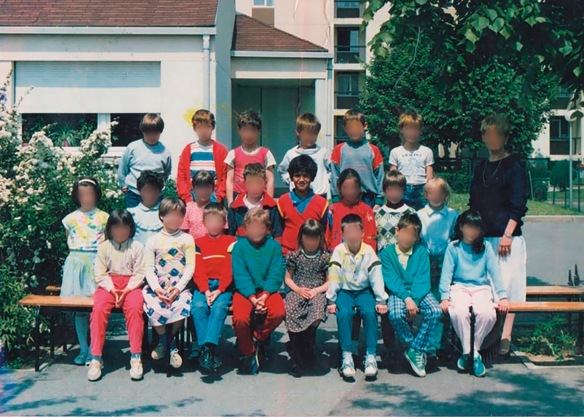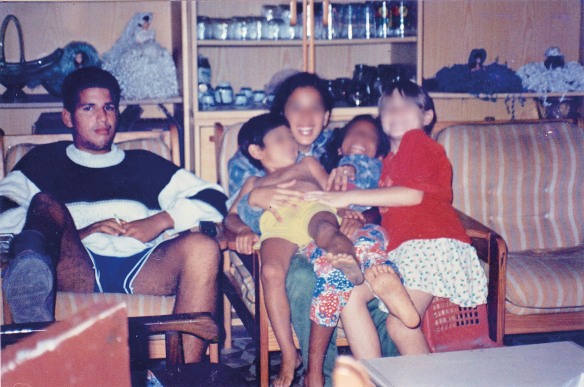This is a picture of Fabien Clain when he was a child in northern France:
 It’s taken from his Copains d’avant page – France’s Friends Reunited.
It’s taken from his Copains d’avant page – France’s Friends Reunited.
Back then, Fabien was into rap and basketball, and was a real fan of Jesus (he used to write Catholic raps).
Here’s another picture of him, this time in the ’90s, foot up on a chair like any other moody teen:

I’d like to post a picture of him today, age 40. I know he’s huge – prone to putting his arm around people’s shoulders and dragging them in when he talks. And I also know he’s got a beard. But I can’t say anything else. Because Fabien Clain is in Syria.
And he’s a member of ISIS.
Fabien Clain is apparently high up in the terrorist group – last week, the French press revealed he’s behind a plot to use child suicide bombers in Europe – but what’s less known about him is he’s also the group’s leading songwriter, a man whose tunes have reached into the heart of France and Belgium.
I’ve made a podcast about him – and the music of jihad, more generally – that’s just come out as part of the amazing music series, Pitch.
It’s on Audible, which means you need to be a member of it or take a free trial, but please do listen by heading here now (Amazon Prime members also get free access).
I came across Clain’s story initially while researching ISIS’ music for my book, hence posting it here, but this clearly takes that story somewhere else.
If you want a reason to listen to something so dark, well, The Sunday Times has just called the episode “utterly riveting”, but I’d prefer you listen because jihadi songs are important. Why else has ISIS released four this year even though it’s on the ropes – shouldn’t it be putting all its resources into fighting?
Al-Qaida’s Indian arm has released 13 songs in the past two months.
If you like it, please check out other episodes in the series. The amazing Laura Snapes has one on the world’s first Cornish pop album and what it says about our sense of national identity; there’s another great episode on the man who makes music for cats; and there’s a fascinating one on a music teacher who turned around a school – and a district – only for his plan to backfire (that could easily be a New Yorker story).
Huge thanks to Whitney Jones and Alex Kapelman, the people behind Pitch, for commissioning me. It was an amazing experience. And also huge thanks to everyone who features and helped me make it.
If you do enjoy it, you should also listen to the New York Times’ Caliphate podcast. It’s 10 episodes long, includes interviews with a former ISIS members and those who have been terrorised by them, and it’s the best podcast series this year: shocking, moving and thought-provoking.
